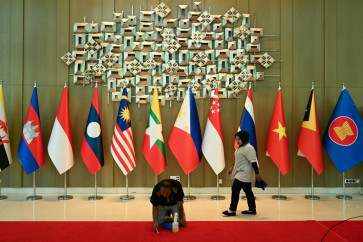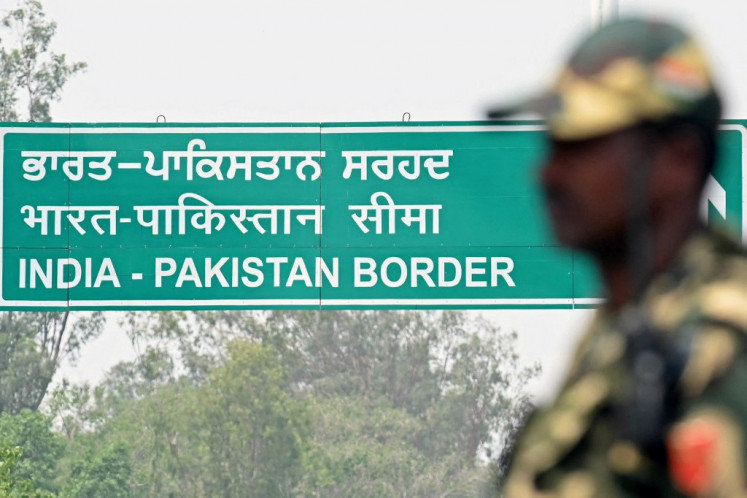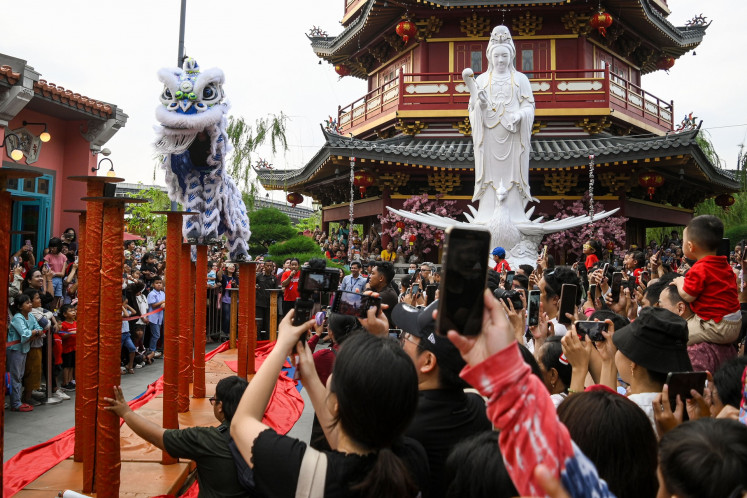Most tourists from Asia in second half of 2009
The number of foreign tourist arrivals in Indonesia will show a new demographic trend in the second half of this year with most visitors coming from Asian countries, the Culture and Tourism Ministry says
Change text size
Gift Premium Articles
to Anyone

The number of foreign tourist arrivals in Indonesia will show a new demographic trend in the second half of this year with most visitors coming from Asian countries, the Culture and Tourism Ministry says.
The new trend is largely caused by two convergent factors, the economic hardships faced by European countries and the US alongside the positive growth of emerging economies in Asia.
"The foreign tourist arrivals will come mainly from Asian countries, *including people* who decided to make holiday trips to Asian nations," minister Jero Wacik said as quoted by the Antara state news agency on Sunday.
Wacik said the number of foreign tourists coming from EU countries and the US was forecast to drop slightly due to the impact of the economic crisis affecting these countries.
In the meantime, he said, Asian tourists preferred to spend their holidays within the region given better affordability and the variety of tourism destinations offered.
"Asian tourists chose to visit nearer countries," the minister said.
The impact of the new trend would result in the total number of foreign tourists arrivals in the country in the second semester growing by three percent compared to the same period last year.
The latest report from the Central Statistics Agency (BPS) also signals a recovery in the total number of arrivals, particularly to the country's top tourism destination, Bali, where arrivals as of April reached 676,336, up by 8.79 percent year-on-year.
The report also shows that there were 188,189 arrivals in the Ngurah Rai airport in Bali in April, which is an increase of 11.99 percent compared to total arrivals the month before.
The increase in Asian tourists arrivals would not directly translate into growth in the tourism industry as the average stay of Asian tourists, excluding Japan, is generally lower than that of European tourists.
The chairperson of the Indonesian Hotel and Restaurant Association (PHRI), SB Wiranti Sukamdani said the growth of the Indonesian hotel and restaurant market up to the end of 2009 was therefore expected to reach between two and three percent.
She said that the two to three percent growth could be achieved if hotel and restaurant operators were active in launching and offering new products to attract visitors.
The growth in the first semester, she said, largely benefited from exposure to international events in the country such as the Asian Development Bank's conference in Bali and the World Ocean Conference (WOC) in Manado, North Sulawesi last month.
In April, she said, Indonesia held a legislative election, which also had a positive impact on the hotel occupancy rate, the use of hotel meeting rooms and visits to restaurants.
But in the second semester of the year the hotel and restaurant market was expected to decline if operators did not take compensatory steps, she added.
"Hotel and restaurant operators must be active in launching promotions to attract visitors so that hotel and restaurant growth in the second semester of the year would not decline," she added.
Wacik said earlier that he remained optimistic that the country's tourism industry will remain strong this year, though tourists would spend less due to the global finan-cial crisis.
He said the global financial crisis would hit tourists "pockets" though, further predicting that average tourist spending per visit would decrease from US$1,170 in 2008 to about $1,000 this year.
He added that the tourism industry last year generated an income of $7.5 billion, significantly higher than the $6 billion originally targeted by the ministry.
Jero predicted that Indonesia would see 6.5 million tourists by the end of 2009.
The effort to boost tourism amid the current crisis, Jero said, was also hampered by the limited government budget.
The budget allocation for tourism marketing, he said, had yet to reach the ideal level with only Rp 300 billion ($30.3 million) earmarked for 2009, a slight increase from Rp 250 billion in 2008.
To reach the tourist arrival target for this year, he said, the ministry needed around $700 billion.









